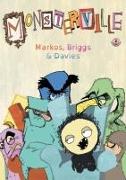- Start
- Cotton in Turkey (Classic Reprint)
Cotton in Turkey (Classic Reprint)
Angebote / Angebote:
Excerpt from Cotton in TurkeyTurkish cotton is almost entirely 1 1-3/ 32 in staple length, as is 70 percent of the cotton grown in the United States. Cotton currently costs around 24 cents per pound to produce in Turkey at average yields under irrigation, including 7 cents for land and overhead. With high yields, costs can fall to as low as 17 cents, including 5 cents for land and overhead. In the last few years, Turkish cotton generally has sold on world markets at prices ranging from 1 to 2 cents per pound below u.s. Cotton although there have been times when us. Cotton was fully competitive.Despite success in the export market, Turkish cotton in recent years has come up against heavy competition at home from other crops - Mexican wheat in particular. Introduced to Turkey in 1967, this high-yielding wheat siphoned off large areas of cotton land during the late 19603, contributing to a 25-percent drop in cotton area between the peak year 1967-68 and 1970-71. Most of the decline was on nonirrigated tracts, where net returns from cotton were disappointing and often below returns obtainable from Mexican wheat.The drift away from cotton may prove, to be short-lived, however, as a consequence of a number of factors. One of these is less favorable results than expected from large plantings of Mexican wheat. Another is the considerable rise in cotton prices in Turkish lira following devaluation in August 1970. Before that time cotton exports earned lira to the dollar plus a 10 percent tax rebate. Since then the applicable exchange rate has been a ¿at lira to the dollar with the possibility of a further rise to in the future if it is felt that the cotton situation warrants it.These factors have stimulated cotton planting sufficiently to bring a rebound in 1971-72 production, given normal weather. Current prospects are for a crop in the neighborhood of the million-bale peak achieved in 1968-69, compared with million produced in 1970-71.Over the longer term, it is likely that a crop rotation involving cotton, Mexican wheat, and other cr0ps may replace the present largely cotton monoculture. And it is unlikely, considering cotton price and cost trends and the availability of Mexican wheat, that nonirrigated cotton will make much of a comeback. In fact, Turkish Government plans call for a phasing out of such cotton. Turkey's irrigated area is gradually increasing and with it additional land will become available for cotton. Cotton gains, however, will probably be restricted by competition from fruits, vegetables, Mexican wheat, and other cr0ps.About the PublisherForgotten Books publishes hundreds of thousands of rare and classic books. Find more at www.forgottenbooks.comThis book is a reproduction of an important historical work. Forgotten Books uses state-of-the-art technology to digitally reconstruct the work, preserving the original format whilst repairing imperfections present in the aged copy. In rare cases, an imperfection in the original, such as a blemish or missing page, may be replicated in our edition. We do, however, repair the vast majority of imperfections successfully, any imperfections that remain are intentionally left to preserve the state of such historical works.
Folgt in ca. 10 Arbeitstagen

